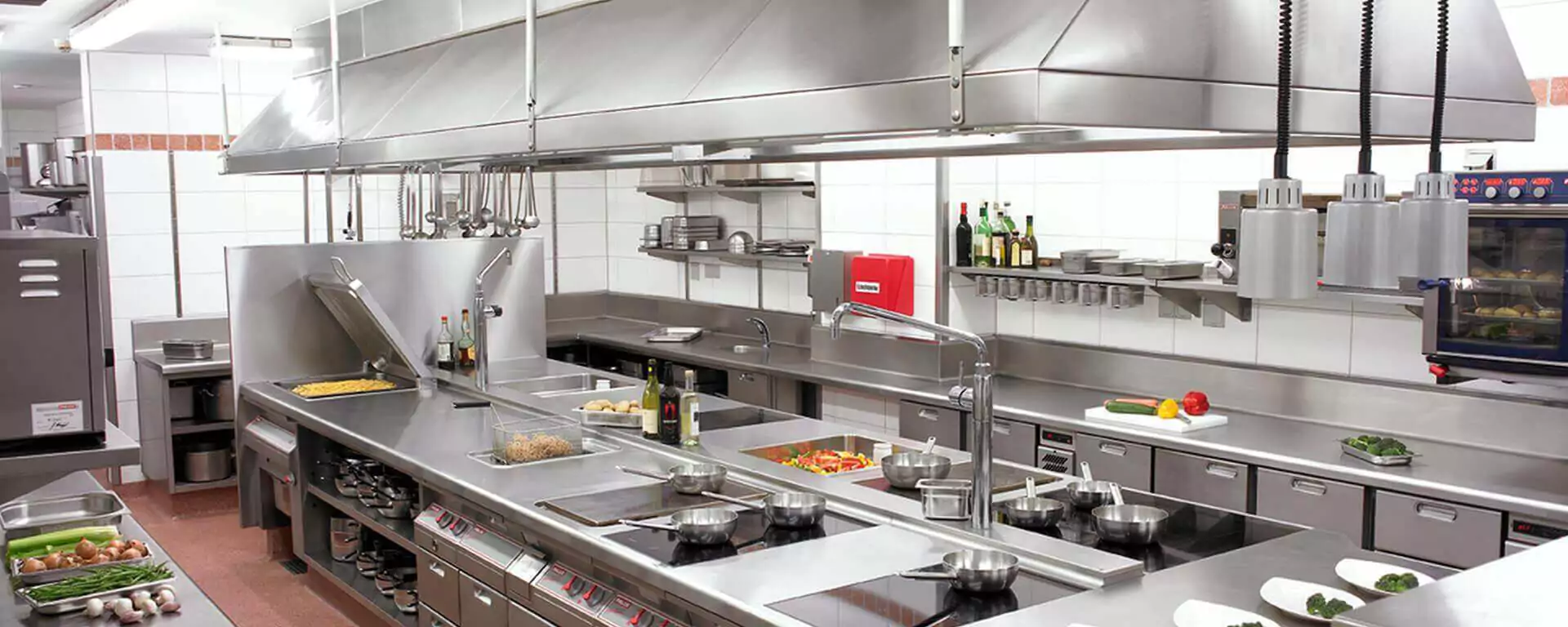Architects play a vital role in designing commercial kitchens that are functional, efficient, and aesthetically pleasing Kitchen Equipment Manufacturers A Guide for Architects. When it comes to the design of commercial kitchens, collaborating with commercial kitchen equipment manufacturers is essential to ensure that the design meets the specific requirements of the foodservice industry. This guide provides architects with valuable insights on how to effectively collaborate with commercial kitchen equipment manufacturers to create successful kitchen designs.
- Introduction
Commercial kitchens require specialized equipment to meet the unique demands of the foodservice industry. Architects must collaborate closely with commercial kitchen equipment manufacturers to ensure that the design seamlessly integrates with the equipment, maximizing efficiency and productivity while adhering to safety and regulatory standards.
- Understanding the Importance of Collaboration
Collaboration between architects and commercial kitchen equipment manufacturers is crucial for a successful kitchen design. Manufacturers possess in-depth knowledge of their equipment and can provide valuable insights into space requirements, utility connections, ventilation needs, and other essential considerations. Working together ensures that the design meets functional requirements and optimizes the performance of the equipment.
- Researching and Identifying Reliable Manufacturers
Architects should conduct thorough research to identify reliable and reputable commercial kitchen equipment manufacturers. Look for manufacturers with a proven track record, extensive industry experience, and a portfolio of successful projects. Reading customer reviews and testimonials can also provide insights into their reputation and the quality of their products.
- Engaging in Early Discussions
Early engagement with commercial kitchen equipment manufacturers is essential. Involve them during the initial stages of the project to gain insights into equipment options, space requirements, and utility connections. Discuss the project goals, timelines, and budget constraints to align expectations and ensure a smooth collaboration throughout the design and construction phases.
- Providing Detailed Project Specifications
Clear and detailed project specifications are vital for the collaboration process. Provide manufacturers with comprehensive information about the kitchen design, including dimensions, equipment requirements, workflow considerations, and any specific operational needs. This ensures that manufacturers can propose suitable equipment solutions that align with the design intent.
- Seeking Expert Advice and Recommendations
Commercial kitchen equipment manufacturers are experts in their field. Architects should leverage their knowledge and experience by seeking advice and recommendations. Manufacturers can suggest innovative equipment solutions, layout optimizations, and energy-efficient options that align with the project goals. Their expertise can significantly enhance the functionality and efficiency of the kitchen design.
- Considering Space and Layout Optimization
Efficient space utilization is critical in commercial kitchens. Collaborate closely with manufacturers to ensure that the design maximizes workflow efficiency, minimizes bottlenecks, and provides sufficient space for each equipment piece. Manufacturers can offer insights into equipment placement, clearance requirements, and ergonomic considerations to create a well-organized and ergonomic kitchen layout.
- Incorporating Industry Standards and Regulations
Commercial kitchens must adhere to various industry standards and regulations for safety and hygiene. Collaborate with manufacturers to ensure that the design incorporates all necessary standards and regulations. Manufacturers can provide guidance on equipment certifications, fire safety measures, ventilation requirements, and other compliance considerations.
- Balancing Functionality and Aesthetics
While functionality is paramount in commercial kitchen design, aesthetics also play a significant role. Collaborate with manufacturers to strike a balance between functionality and aesthetics. Manufacturers can offer equipment options that align with the design theme, integrate seamlessly with the overall aesthetics, and contribute to an inviting and visually appealing kitchen space.
- Addressing Sustainability and Energy Efficiency
Sustainability and energy efficiency are increasingly important in commercial kitchen design. Collaborate with manufacturers to select energy-efficient equipment options that minimize water and energy consumption. Manufacturers can provide information about energy-efficient models, smart technologies, and environmentally friendly features that align with the project’s sustainability goals.
- Testing and Evaluating Equipment
Before finalizing the design, it is crucial to test and evaluate the proposed equipment. Collaborate with manufacturers to arrange equipment demonstrations or site visits to observe the performance, functionality, and usability of the equipment. This allows architects to assess the equipment’s suitability for the design and make any necessary adjustments before installation.
- Maintaining Ongoing Communication
Effective communication throughout the collaboration process is key to a successful outcome. Maintain ongoing communication with commercial kitchen equipment manufacturers to address any design modifications, equipment updates, or unforeseen challenges. Regular meetings, site visits, and email correspondence will ensure that the project progresses smoothly and any issues are promptly resolved.

FAQs
Why is collaboration with commercial kitchen equipment manufacturers important for architects?
Collaboration with manufacturers ensures that the kitchen design integrates seamlessly with the equipment, optimizing efficiency, safety, and functionality.
How can architects identify reliable commercial kitchen equipment manufacturers?
Architects should conduct thorough research, read customer reviews, and consider manufacturers with a proven track record and extensive industry experience.
What role do commercial kitchen equipment manufacturers play in optimizing space utilization?
Manufacturers provide insights into equipment placement, clearance requirements, and ergonomic considerations, helping architects create efficient and well-organized kitchen layouts.
How can architects address sustainability and energy efficiency in commercial kitchen design?
Collaborating with manufacturers can help architects select energy-efficient equipment options, incorporating smart technologies and environmentally friendly features.
Conclusion
Collaborating with commercial kitchen equipment manufacturers is essential for architects to create successful and functional kitchen designs. By leveraging the expertise of manufacturers, architects can ensure that the design integrates seamlessly with the equipment, optimizing efficiency, safety, and sustainability. Effective collaboration throughout the design and construction process is crucial for achieving the desired outcome.





